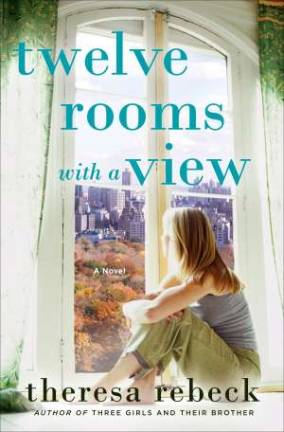New York Family: New York Estate of Mind

Celebrated Playwright And Author Theresa Rebeck Tackles New York City Real Estate And Family Ties In Her Latest Novel By Brittany McNamara In her new novel "Twelve Rooms with a View," acclaimed playwright and novelist Theresa Rebeck introduces the character of Tina, a cash-strapped woman who learns on the day of her mother's funeral that she could possibly inherit an $11 million, twelve-room apartment overlooking Central Park. However, Tina must battle her sisters and stepbrothers for the spectacular home, and needless to say, brutal family feuds ensue. Yet at the root of the novel is a web of characters struggling to find their home, their families and themselves in New York City. In our interview with her, Rebeck, a resident of Brooklyn and mother of two (Cooper, 15, and Cleo, 8) with husband Jess, chats about brownstones, Broadway and her own adventures in real estate. What inspired you to write this book? I've always found the giant apartment buildings on Central Park West to be particularly beautiful; they hold real mystery for me. One time I went to visit my friend Susan who was staying with her aunt, who lived in one of those apartments, so I got to go up there and see it. It was a day that I held in my heart for a long time-the privilege of getting to be inside one of those apartments and poke around and hear about the history of the building. That was 10 years ago, so I've been sitting on that for a long time and wondering what it would turn into, and it finally appeared as a novel. Did you have any real estate experiences in your personal life that are similar to those in the book? The story about losing your inheritance happened to my brother's wife. Her father remarried late in life and he deeded everything over to his wife. So ultimately] everything she owned, her entire history was suddenly owned by someone else. My husband and I have had several buying and selling experiences in New York, and they never are simple. What I find interesting is how complicated things can get without warning. We live in a brownstone house in Brooklyn now. The guy who lived here had been trying to renovate it by hand for 30 years, and the place looked like a complete wreck. He was living in one room of this brownstone that was collapsing around him. Everybody told us we would never get him out, but he fell in love with my husband and he felt like he was a worthy heir for this house. So he moved on and we got this place, but I will never forget that craziness of walking into what looked like a respectable brownstone and wandering into this insane other world. I think these places are more mysterious than we give them credit for-we see things through this kind of prism of order and real estate and what things are worth. A lot of the familial relationships in the book seem damaged or unhappy. Why did you choose to portray the characters in this way? They're broken people because Tina [the main character] is broken in the same way. She has to heal herself by healing other people. She has to learn about her own brokenness, which is related to the loss of her family, by mending that wound in other people in the building. It's a fairytale structure on some level. That's the hero's journey, to discover himself by healing others. The whole story is about a fight between two families over an apartment, yet you end the story unresolved. Why? I think that grasping at ownership is not the way to own something. Tina didn't need that place, she needed to find her own place and she needed to find herself. To read the full interview at New York Family [click here.